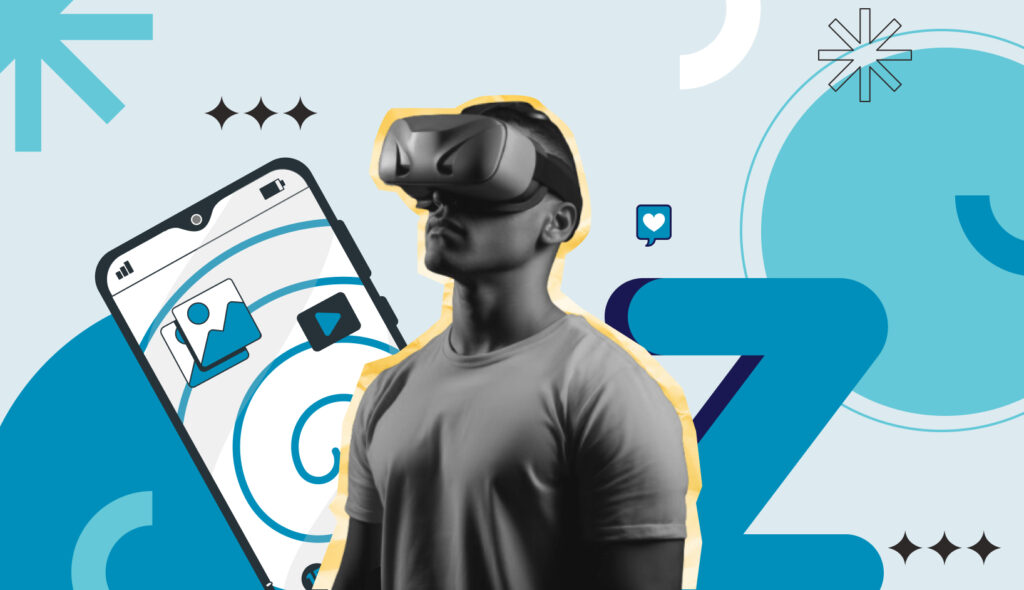Let’s be real here—designing for Gen Z isn’t just part of another checklist of design trends. It’s a complete reorientation of how we think about an organization’s digital presence, interaction, and identity in the digital space that’s now a permanent imprint of its legacy. This generation doesn’t just use digital products throughout their daily life—they rely on them. They build culture through discussion forums, shape narratives about global tragedies in 15-second videos, and influence design trends for their peers and corporations from their phones. If you’re not designing with them in mind, you’re designing for a past that’s quickly becoming irrelevant.
So, what does it actually take to create digital experiences that resonate with Gen Z? Let’s unpack.
Stuti Mazumdar - May 2025

Start with Values, the Bigger Picture
Designing for Gen Z starts before you even start the process of pouring your ideas into design. This is a socially conscious, hyper-aware, and deeply diverse generation. They seldom care about polish and almost always about purpose.
Gen Z expects digital experiences and all the featured content to reflect the causes that organizations care about, helping them orient towards brands that stand for what they believe in. Hence, as part of organizations as a whole, design can’t be neutral anymore—it must take a stance. That means inclusive imagery, accessible interfaces, and language that doesn’t talk down, but punches you up.
Gen Z Doesn’t Just Browse
Sure, the move from short-form content to shorter-form content has greatly limited the attention span of Gen Z audiences. However, it’s evoked a new sense of responsibility in them. One that equalizes them, gives them all a voice.
Unlike previous generations, Gen Z isn’t content to passively consume everything online. They’re collaborators, curators, co-creators—and dare we say, influencers. That’s why user-generated content (UGC) is a core UX principle.
If your product isn’t designed to evolve through your users, it’s already outdated. Think of social media giants like TikTok, where the UI is built around remixing. Or Canva, where users design with tools that once belonged only to professionals.
Designing for Gen Z means creating tools, not templates—interfaces that are open to reinterpretation and personalization.
Short Attention Span? Try Clearer Experiences
Known for short attention spans, Gen Z scrolls fast because they process content quickly. If your digital product doesn’t make sense in 5 seconds, it probably never will.
Good UX design here is about condensing the experience, not oversimplification. Think clean architecture for seamless browsing, friendly interfaces for simplified experiences, high-contrast visuals for accessibility, and micro-interactions that serve a purpose. It’s not about designing less—it’s about designing sharper.
Social Media Is Not Just a Channel Anymore
Social media isn’t just where Gen Z hangs out—it’s where they design, perform, shop, debate, and express themselves. Hence, social UX is now part of the core experience. Engagement systems, shareable content, remixing tools—these aren’t features, they’re foundations.
Since Gen Z is all about being opinionated in public, your digital products need to be ready to adapt, respond, and sometimes even let go of control. Thus, user flows need to be conversational, not transactional. Think less “funnel,” and more “feedback loop.”
Visual Culture Is the Language
Gen Z communicates in memes, trending music, emoji chains, and aesthetic references pulled from 30 years of subculture. Your UI doesn’t need to replicate that—but it does need to feel like it gets it. It could be “inspired” by it. That’s how design trends don’t steal—they borrow to build something of their own.
Function Meets Feelings
If Millennial design was all about usability, Gen Z design is about emotional resonance. UX design for Gen Z doesn’t stop at interaction—it considers impression. It’s about the tone of the onboarding flow, the way buttons animate, the sounds you use, and the feedback you give. They’re part of how trust is built.
And yes—it’s okay to be experimental with how the experience looks, as long as it’s sincere. Gen Z is fluent in irony and earnestness at the same time. The best interfaces walk that line with intention.
Where AR and UX Shake Hands

When Gen Z says they want immersive experiences, they’re not asking for another 3D loading animation. They want technology that meets them in the real world and adds value, not noise.
Augmented reality (AR) has moved from novelty to necessity and continues to do so in real time. Whether it’s virtually trying on clothes or seeing how furniture fits in their room, Gen Z sees AR as a fundamental utility wrapped in delight. Designing with AR in mind isn’t about building a spectacle, it’s about solving a real, tactile problem in an elegant, intuitive way. After all, this generation isn’t impressed by digital magic. They expect it.
So, What Do We Do With All This?
You design your digital experiences like you’re part of the culture—not hovering above it. You stay rooted in principles: accessibility, empathy, clarity. But you allow for experimentation. You build for utility, but you leave room for expression. You listen—not just through user research, but through behavior, language, memes, and micro-trends. You design for change, not just for delivery. And perhaps most importantly, you involve Gen Z in the process. Because they’re not your users. They’re your collaborators.



